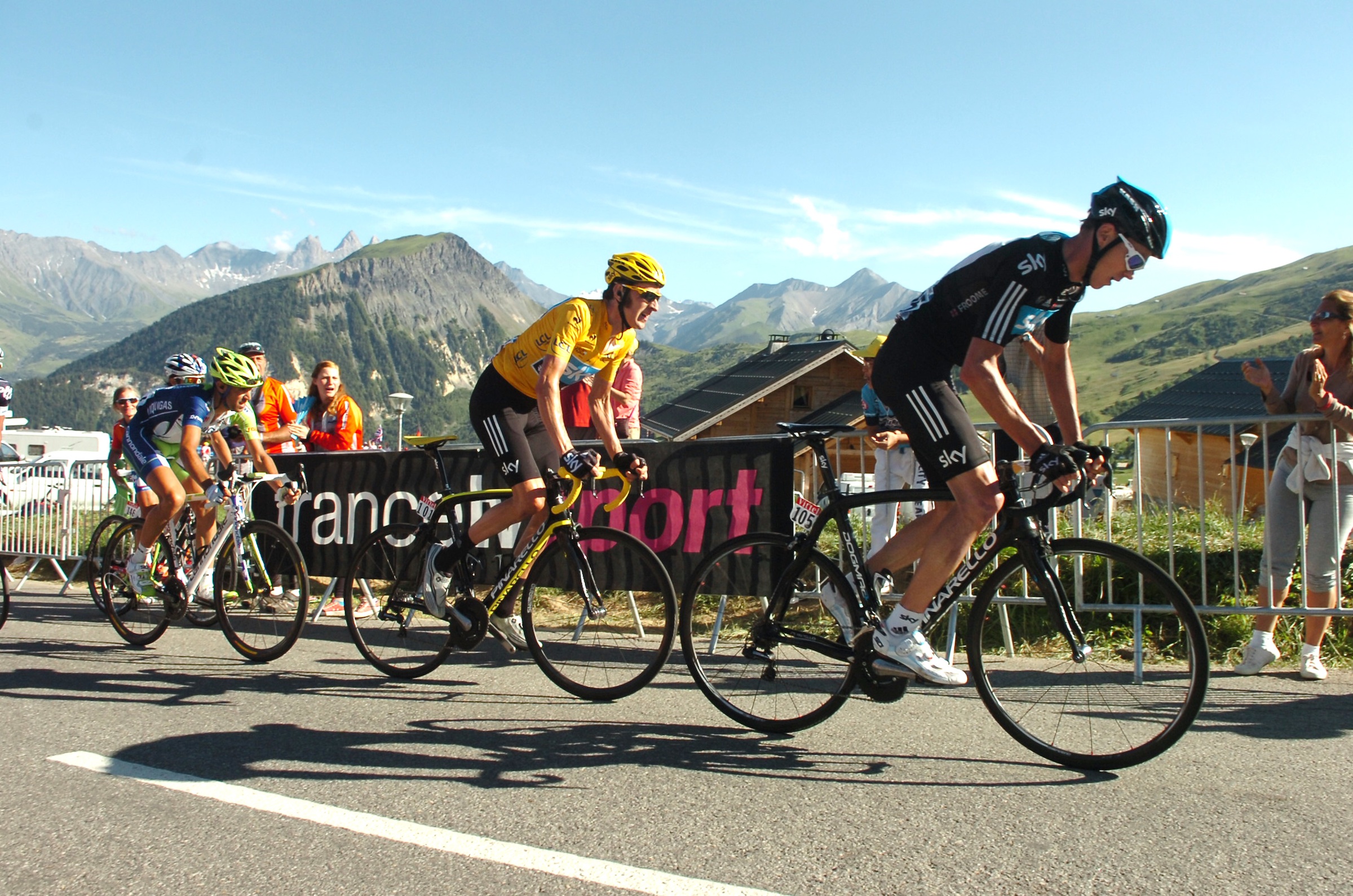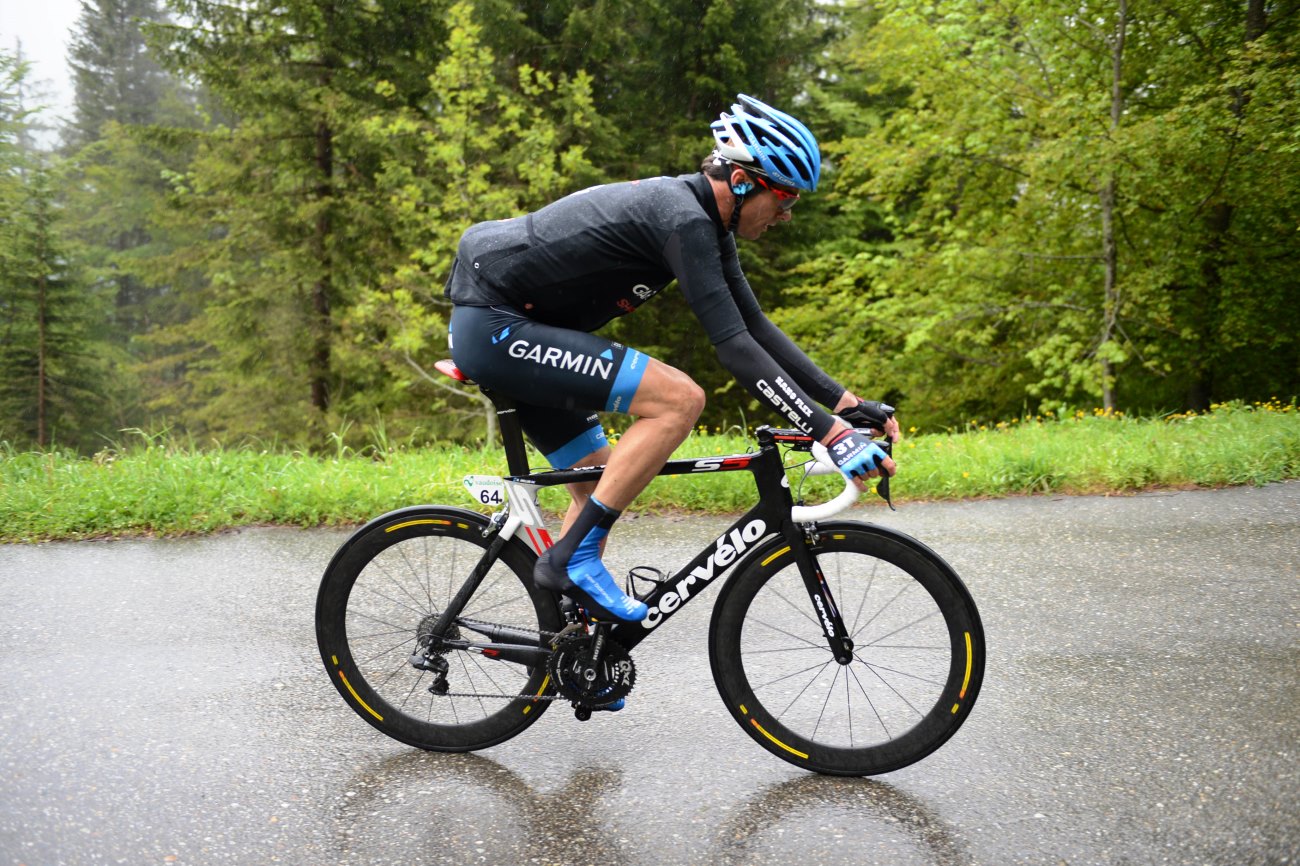5. VAM
-

Hill reps are an effective way to improve your climbing prowess
-

While professional cyclists are secretive about their power to weight figures, Chris Froome and Alberto Contador will both be over 6w/kg (Pic: Sirotti)
-

While Tony Martin is no certainly slouch going uphill, his build and physiology are best-suited to the demands of a time trial, where power is more important in relation to aerodynamics (Pic@ Tim de Waele/Etixx-QuickStep)
-

Having reach his physiological potential, Bradley Wiggins improved his climbing ability by losing weight, rather than necessarily focusing on increasing his power (Pic: Sirotti)
-

Peter Cossins' looks at 'cycling's greatest climb' in Alpe d'Huez (pic: Media-24)
-

No matter how good your kit is, you can't escape the suffering that comes from riding uphill in the heat (Pic: Strava)
5. VAM
VAM stands for ‘velocità ascensionale media’ or, in English, ‘average climbing speed’.
VAM is a measurement of your climbing rate expressed as how many vertical meters you will climb in one hour. Let’s use Alpe d’Huez as an example: the bottom of the climb is at 744m and the summit is at 1,815m. Therefore, if you climb the famous 21 hairpins in exactly one hour – and that is the goal many riders established riders set themselves – then your VAM will be 1,071m per hour. To offer a comparison with professional cycling, during the Tour de France the best riders will be able to sustain 1,600-1,700m/h.
Your GPS computer will most likely be able to give you a current VAM reading, given as meters per hour. This is a great tool to use to gauge your effort on a long climb. If you are aiming for the golden hour for l’Alpe then you know you can’t let your VAM drop below 1,071m/h. Likewise, it’s best not to set off at 2,000m/h as at some point you will blow up.
VAM is something I have used successfully with my coaching clients who don’t have access to a power meter, but who want to judge their pace and effort on long climbs during tough, mountainous sportives like the Marmotte and Etape du Tour. As a result, it’s a useful figure if you are targeting a particular time as climbing takes up a significant proportion (of time and effort) of such events.
Unfortunately, if you are looking to use VAM as a guide to pacing during your next sportive it can only really be calculated accurately by doing a test on a long climb. You can calculate a sustainable VAM using a similar method to an FTP test. If you are lucky enough to have a local twenty-minute climb then ride as hard as possible from top to bottom, record your VAM and then take 95 per cent of that figure for the VAM you can sustain for one hour.
Pacing using VAM
When using VAM as a pacing aid you also need to take a three other factors into account.
Firstly, wind. When riding with a tailwind your VAM will be much higher as you are effectively being pushed up the climb and so less effort is required for the same rate of ascent. On the flip side, when riding into a headwind the additional resistance will mean that your VAM figure will drop for the same effort.
Gradient also has a small affect on VAM. On steeper climbs you will find that you be able to sustain a higher VAM figure than on shallow climbs. VAM is most useful when climbing on a gradient of between six and 15 per cent. Any shallower and wind resistance has too much of an effect, any steeper and you are simply going so slow that you aren’t making enough forward progress to sustain a high VAM figure.
Finally, the length of the climb also affects VAM. You need to take into account the length of the climb when calculating the VAM figure to aim for. If, for example, you know you can sustain 1,000m/h for one hour then on a twenty-minute climb you need to aim a little higher – around five per cent. On the other hand, if you will be climbing for one-and-a-half to two hours then you need to aim for five per cent less than your one-hour VAM figure.
It can be difficult to follow VAM on climbs with irregular gradients – for example, a lot of Pyrenean climbs. In this case, some computers have a 30-second average VAM figure and this is really useful as it smoothes out the peaks in VAM during the steep hairpins and the lulls on the flatter sections, and so it gives a much more stable number to ride to.
VAM and power to weight ratio are intrinsically linked, and by now it’s likely you’ll want to hit the road to improve your climbing ability. Flick through to the final page for a training session to do just that.





